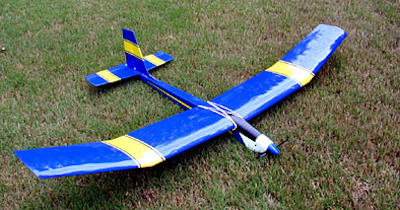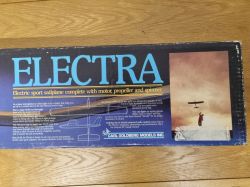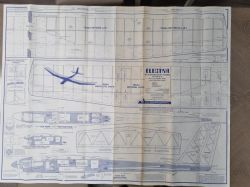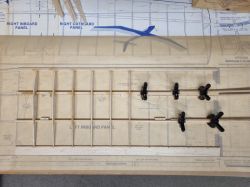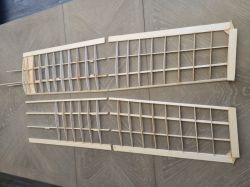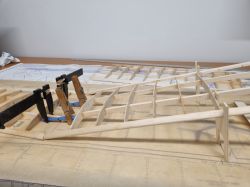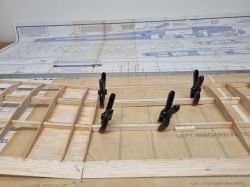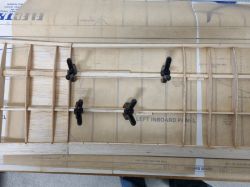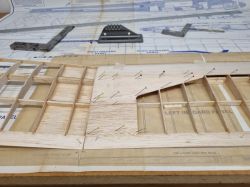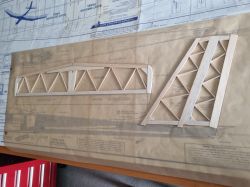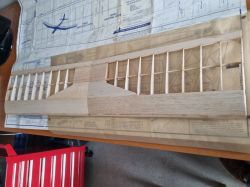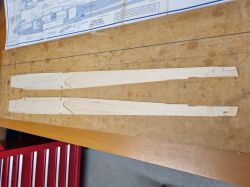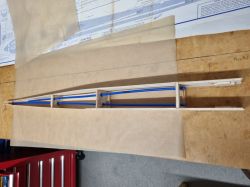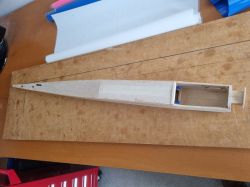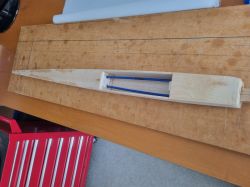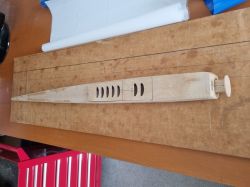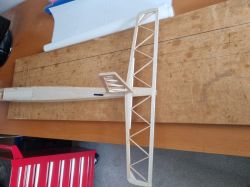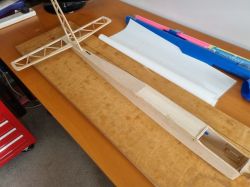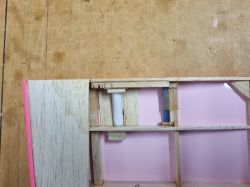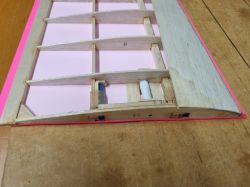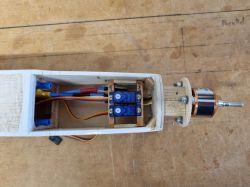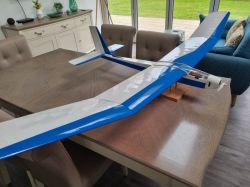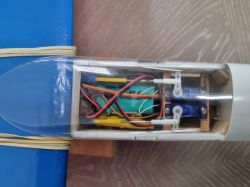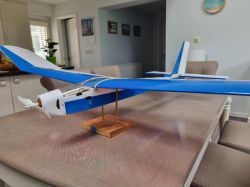Carl Goldberg Models. 2 meter wingspan electric glider for 3 function RC
Looking for something to pass the time, whilst I waited for a new large petrol model, I saw this advertised in the BMFA classified adverts – just reduced, by a local fellow, so I bought it. Apart from being quick to build, it offered a first step for me into electric flight and something different to my usual sport flyers. This model has its heritage rooted in the Gentle Lady by the same manufacturer.
A very popular 2 function glider design from the 1970s. In fact it was the first RC model I ever built (in the 90s I hasten to add). The instructions say it ‘was redesigned for the higher performance demands of electric flying’. I think this came out in the 1980s. The text on the box shows it was aimed at fairly new model flyers at a time when RC flying was beginning to appeal more widely.
In the box there’s a large paper plan, an incredibly comprehensive set of instructions, many die cut balsa and plywood sheets, various lengths of balsa and hardwood stock, plus a perspex canopy and plastic cowl. In addition, this being the ‘Delux Kit’, it included a heavy ‘Turbo 550 motor’ (also apparently used in model buggies at the time) complete with a metal toggle switch of the type you’d have found on a 1950s car dashboard and a large fuse, all pre-wired together. The idea was that the motor could be crudely turned on or off by a push rod connected between the switch and a standard servo. The plans show 2 more standard servos and a 6 cell ni-cad battery for the motor and another 4 cell for the servos. No miniaturization in those days!. It says on the box the target weight was 48 ounces – actually I’d be surprised if anyone ever managed to build it as shown, even down to that weight. Though it did fly, a more recent review I read, described it as akin to a lead sled.
You Tube has some very helpful videos, and in particular there’s some excellent flying of an Electra and an explanation of how to lighten it up. They mentioned a final build weight of 24 ounces – that’s half the original, by using miniature servos, a brushless motor and a LiPo battery. Well as it happened 4 Max were advertising a ‘value pack’, featuring a 2212, 1400KV outrunner with flexible propellers, a 30 amp ESC and 3 micro 9g servos, which along with a 3S 1300 mAh battery enabled me to obtain all I needed to really cut down the weight and also of course improve the performance. Anyone want a buggy motor?.
At 2 meter length the wing is fairly unwieldy to transport in a car; so the designers offered a solution – an option to make the outer wing panels detachable for transporting. It’s a polyhedral wing design, which means each side has an inner and outer panel and each panel is built separately on the board. They show strengthening of the ribs that abut at the respective joins and replacing the ply dihedral braces with rods inserted into close fitting tubes. I did this, though instead of the 4mm diameter steel piano wire and brass tubes specified, I used lighter carbon fibre rod and plastic push rod sleeve. The fuselage and wings went together without issue, there being an element of pre-cut slots and tabs allowing the parts to be precisely located and Carl Goldberg recommend using cyanoacetate glue
In order to minimize the potential amount of additional nose weight I might need, I crammed as much as I could in the cockpit space (notably in contrast to the plans which showed both batteries and two standard servos in the void below the wing). The instructions seem to gloss over how to fix the perspex canopy though, but I noted in the list of additional things you might require, there was mention of canopy glue. I needed to be able to get access to the cockpit via the canopy though and so slid the front edge under the cowl, whilst the sides are held in place with 2 small magnets – it holds down remarkably well. Finally, I covered the model with a colour scheme using Solar film and Easy Coat film and it took a further 1.5 ounces of lead in the nose to balance on the C of G.
The finished model is considerably lighter than the originally designed target weight of 48 ounces but not quite the 24 ounces mentioned in the You Tube video, which I suspect might not be the entire story.
This should be a lovely plane to fly on a balmy windless afternoon. Roll on summer!

